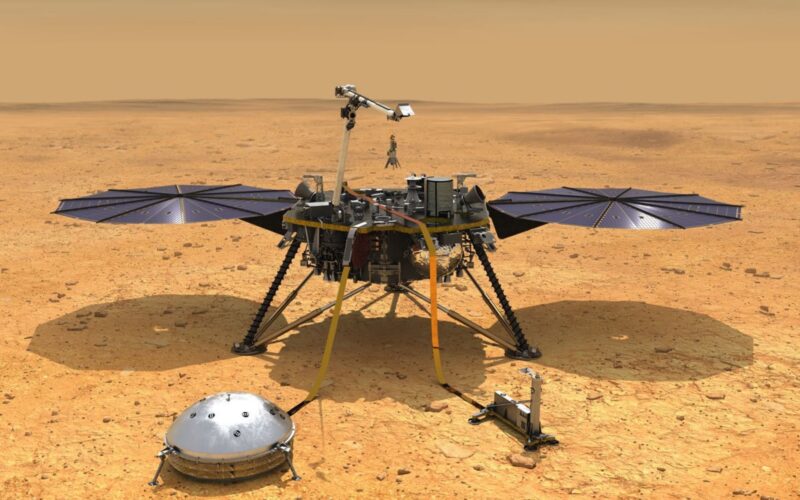NASA’s InSight Mars lander, which has been operating on Mars since 2018, has sent what is likely to be its final communication, posting a message on Twitter.
“My power’s really low, so this may be the last image I can send,” the message read, indicating that the end of probe’s mission, which has already lasted twice as long as initially intended, is drawing near.
InSight has been experiencing problems with its solar arrays for a while now. On November 10, 2022, the lander posted a picture of the arrays covered in Martian dust on Twitter, explaining that power generation was becoming more and more difficult. The account also explained why a device to dust-off the arrays had not been installed on the lander.
“A system like that would have added cost, mass, and complexity. The simplest, most cost-effective way to meet my goals was to bring solar panels big enough to power my whole mission – which they did (and then some!),” the tweet said.
An eventful career
InSight was launched on May 5, 2018, landing on Mars seven months later. With a mass of approximately 50 kilograms (110 pounds), InSight carried a wide array of scientific experiments including a seismometer, a weather station and a burrowing probe.
The lander’s mission was to study the interior of Mars while taking measurements that previous landers and rovers were not able to take.
Initially expected to operate for approximately 700 Martian days (just over two Earth years), In Sight remained operational for more than 1,440 days, greatly exceeding the intended lifespan of its solar arrays.
According to NASA, InSight made a number of scientific discoveries: it detected the first marsquake, studied the remains of Mars’ electromagnetic fields, and detected meteoroid impacts that allowed Mars Reconnaissance Orbiter – NASA’s satellite which rotates around Mars – to study new impact craters and discover ice there.
Tugging on heart strings
NASA has been known for its attempts to provide the robots it has sent to Mars with a personality. Beyond giving them names and running high-profile publicity campaigns, NASA would run social media accounts publishing posts from the first-person perspective of a device.
The posts would be an interpretation of the data sent by the device, infused with additional quirks and features to give them more emotional weight.
One of the most notable cases occurred in 2019, when NASA sent a final message from the Opportunity rover, which operated on Mars for 15 years, claiming: “My battery is low and it’s getting dark.”

